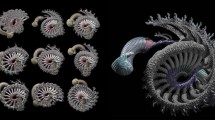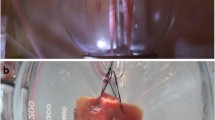Abstract
If complexity is a necessary but not sufficient premise for the existence and expression of the living, anticipation is the distinguishing characteristic of what is alive. Anticipation is at work even at levels of existence where we cannot refer to intelligence. The prospect of artificially generating aesthetic artifacts and ethical constructs of relevance to a world in which the natural and the artificial are coexistent cannot be subsumed as yet another product of scientific and technological advancement. Beyond the artificial, the synthetic conjures the understanding of aesthetics and ethics no longer from the perspective of the How? type of question, but rather the Why? Given the current infatuation with synthetic biology (i.e., making life from non-life), there is a practical consequence to such considerations. Synthetic life, as any other form of life, implies the possibility of evolution. Anticipation, which is the underlying factor of evolution, is thus expected. At the level of human existence, anticipation is expressed, for instance (but not exclusively), in aesthetic forms and ethical values. This translates, in turn, into an argument for the role aesthetics and ethics play in the process. Consequently, to qualify as life, the synthesis of the physical and the living will have to efficiently handle ambiguity. Current computational facilities, regardless of their nature or performance, operate exclusively in the semiotic domain of the well defined non-ambiguous.







Similar content being viewed by others
Notes
Gödel’s first incompleteness theorem, perhaps the single most celebrated result in mathematical logic, states: Any effectively generated theory capable of expressing elementary arithmetic cannot be both consistent and complete. In particular, for any consistent, effectively generated formal theory that proves certain basic arithmetic truths, there is an arithmetical statement that is true, but not provable in the theory.
The incompleteness theorem first appeared as “Theorem VI” in his 1931 paper On Formally Undecidable Propositions in Principia Mathematica and Related Systems I. In Gödel’s original notation, it states: “The general result about the existence of undecidable propositions reads as follows: ‘Theorem VI.’ For every ω-consistent recursive class κ of FORMULAS there are recursive CLASS SIGNS r, such that neither v Gen r nor Neg(v Gen r) belongs to Flg(κ) (where v is the FREE VARIABLE of r)”.
References
What is Life? Nature 123:3090, January 19, 1929, 73–75 and What is Life? Nature 124:3124, September 14, 1929, 397–399
Aleksander I (2004) Beyond artificial intelligence. Nature 429:701–702
Barker GF (1880) Modern aspects of the life question. Science 1:112–118
Benner S (2008) Biology from the bottom up (Book Review: E Regis, What is life investigating the nature of life in the age of synthetic reality?), Nature 452:693–694
Bergson H (1889) Essai sur les données immédiates de la conscience (Time and Free Will). Felix Alcan, Paris
Bergson H (1907) L’évolution créatrice (Creative Evolution). Felix Alcan, Paris
Bergson H (1994) Matter and memory (trans: Paul NM, Palmer WS). Zone Books, New York
Böhm HJ, Schneider G (eds) (2003) Protein-ligand interactions. From molecular recognition to drug design. Wiley-Blackwell, Hoboken 242 pages
Bohr N (1949) Discussion with Einstein on epistemological problems in atomic physics. In: Schlipp PA (ed) Albert Einstein: philosopher-scientist. The Library of Living Philosophers, Evanston
Cohen H (1982) For information on the development of Aaron. See http://crca.ucsd.edu/~hcohen/
Croce B (1906) What is living and what is dead of the philosophy of Hegel. See www.marxists.org/reference/subject/philosophy/works/it/croce.htm
Darwin C (1859) On the Origin of Species by Means of Natural Selection. John Murray, London. (See also: http://thinkexist.com/quotes/charles_darwin/)
Davies P (2005) A quantum recipe for life. Nature 437:819
de Duve C (1996) A paean to living things. Nature 379:409
de la Mettrie JO (1747) L’homme machine
Descimon H (1992) Beauty in evolution. Evolution 46(6):1981–1983
Dilthey W (1883) Einleitung in die Geisteswissenschaften. Versuch einer Grundlegung für das Studium der Gesellschaft und der Geschichte, erste Band. Leipzig: Verlag von Dunder und Humblot. See also: Dilthey W (1991) Introduction to the human sciences. In: Makkreel RA, Rodi F (eds) Selected works, vol I. Princeton University Press, Princeton. See also: Dilthey W (1990) Einleitung in die Geisteswissenshaften. In: Hrsg. von B Groethuysen (ed) Gesammelte Schriften. Vandenhoeck & Ruprecht, Band. I. Göttingen
Elsasser WM (1998) Reflections on a theory of organisms. Johns Hopkins University Press. Originally published as Reflections on a theory of organisms. Holism in biology. Orbis Publishing, Frelighsburg, Quebec, 1987
Enquist M, Arak A (1994) Symmetry, beauty and evolution. Nature 372:169–172
Fichte JG (1998) Aenesidemus review. In: Fichte’s early philosophical writings (trans: Breazeale D). Cornell University Press, Ithaca, pp 62–63
Fuchs-Kittowski K (1968) Probleme des Determinismus und der Kybernetik in der molekularen Biologie—Tatsachen und Hypothesen zum Verhältnis des technischen Automaten zum lebenden Organismus. VEB Gustav Fischer Verlag, Jena (zweite erweiterte Auflage, Jena, 1976)
Gay N (2007) This ‘new life form’ is just reassembled car parts. The Guardian Editorials & Reply, p. 27 (See also: http://www.guardian.co.uk/commentisfree/2007/oct/10/comment.comment. Accessed 17 Nov 2009)
Gödel K (1986–2003) Collected works. In: Feferman S et al (eds), vol 1. Oxford University Press, New York, pp 144–204
Hall TS (1969) Ideas of life and matter, vol I & II. University of Chicago Press, Chicago
Jan Y-N, Jan L (1921) Retrospective: Seymour Benzer. Science 319:45 (2007)
Kant I (1987) Critique of judgement (trans: Pluhar WS). Hackett Publishing Co, Indianapolis
Kepner WA (1934) Cartesianism is becoming less a dogma. Science 80(206):5–8
Kercel SW (2007) Entailment of ambiguity. Chemistry & Biodiversity 4:2369–2385
Kleene S (1950) Introduction to metamathematics. van Nostrand, Amsterdam
Kurzweil R (2000) The age of spiritual machines: when computers exceed human intelligence. Penguin, New York
Kurzweil R (2006) The singularity is near: when humans transcend biology. Penguin, New York
Laplace PS (1951) A philosophical essay on probabilities (trans: Frederick Wilson Truscott, Frederick Lincoln Emory, from the 6th French edition). Dover Publications, New York
Marcus G (2004) Programs of the mind. Science 304:1450–1451
Mayr E (2002) The Walter Arndt Lecture: the autonomy of biology. See: http://www.biologie.uni-hamburg.de/b-online/e01_2/autonomy.htm The autonomy of biology: the position of biology among the sciences. The Quarterly Review of Biology 1996, 71(1)
Mcfadden BJ (2000) Cenozoic mammalian herbivores from the Americas: reconstructing ancient diets and terrestrial communities. Annual Review of Ecological Systems 33–59. http://arjournals.annualreviews.org/doi/pdf/10.1146/annurev.ecolsys.31.1.33?cookieSet=1
Nadin M (1988) Interface design: a semiotic paradigm, Semiotica 69-3/4. Mouton de Gruyter, Amsterdam pp 269–302. See also Interface design: a semiotic paradigm. Keynote address, Fourth Annual Computer Graphics Conference (Applications on the Leading Edge), University of Oregon Continuation Center, Eugene, October 27–29, 1985 (For a broader description, see http://www.semioticon.com/seo/S/semiotic_machine.html)
Nadin M (1991a) Science and beauty: the aesthetic structuring of knowledge. Leonardo 24(1):67–72
Nadin M (1991b) Mind—anticipation and chaos (in the series Milestones in Research and Discovery). Belser Presse, Stuttgart
Nadin M (1995) Negotiating the world of make-believe: the aesthetic compass In: Real-time imaging, vol 1. Academic Press, London, pp 173–190
Nadin M (1998) The civilization of illiteracy. Dresden University Press, Dresden
Nadin M (2003a) Anticipation—the end is where we start from. Müller Verlag, Basel
Nadin M (2003b) We are what we do. http://home.snafu.de/jonasw/PARADOXNadinE.html (Winter)
Nadin M (2005) Semiotic machine. In: Bouissac P (ed) Semiotics encyclopedia online (http://www.semioticon.com/seo/S/semiotic_machine.html)
Nietzsche F (1886) Jenseits von gut und böse. C. J. Neumann Verlag, Leipzig
Pawlowski B, Boothroyd LG, Perrett DI, Kluska S (2008) Is female attractiveness related to final reproductive success? Collegium Anthropologicum 32(2):457–460. See also http://www.dur.ac.uk/l.g.boothroyd/papers/bogus_2008.pdf
Peirce CS (1903) Ethics of termeinology, MS 478. Peirce’s Manuscript references pertain to RS Robin, Annotated Catalogue of the Manuscripts of Charles S. Peirce. University of Massachusetts Press, Amherst MA, 1967
Peirce CS (1931–1935) In: Hartshorne C, Weiss P (eds) The collected papers of Charles Sanders Peirce, vols 1–6. Harvard University Press, Cambridge, MA, CP 1:74
Perutz MF (1987) Physics and the riddle of life. Nature 326:555–558
Rasmussen S, Chen L, Deamer D, Krakauer DC, Packard NH, Stadler PF, Bedau MA (2004) Transitions from nonliving to living matter. Science 303:963–965
Rosen, R (1966) In: Burks AW (ed) Theory of self-reproducing automata. University of Illinois Press, Urbana (Consider also “The general and logical theory of automata” read at the Hixon Symposium Sept. 20, 1948. In: Taub AH (ed) John von Neumann: collected works, vol 5. Macmillan, New York, pp 288–328 (1961–1963))
Rosen R (1985a) Anticipatory systems: philosophical, mathematical and methodological foundations. Pergamon Press, New York
Rosen R (1985b) Organism as causal systems which are not mechanisms: an essay into the nature of complexity. In: Rosen R (ed) Theoretical biology and complexity: three essays on the natural philosophy of complex systems. Academic Press, London, pp 165–203
Rosen R (1991) Life itself: a comprehensive inquiry into the nature, origin, and fabrication of life. Columbia University Press, New York
Rosen R (2000) Essays on life itself. Columbia University Press, New York (Chapter 19)
Schaefer EA (1912) The nature, origin, and maintenance of life. Science 36(923):289–312
Schrödinger E (1944) What Is Life? Cambridge University Press, Oxford (See also: What Is Life? Nature, January 19, 1929 and September 14, 1929)
Shannon CE (1948) A mathematical theory of communication. Bell Syst Tech J 27, July, 379–423; October, 623–656
Simon HA (1969) The sciences of the artificial. MIT Press, Cambridge
Simon HA (1981) The sciences of the artificial, 2nd edn. MIT Press, Cambridge
Vaughn VC (1909) The physical basis of life. Science 29(751):799–805
Venter C et al (2008) Complete chemical synthesis, assembly, and cloning of a Mycoplasma genitalium genome. Science 3419(5867):1215–1220
Von Foerster H (1993) Mit den Augen des anderen. In: Schmidt SJ (ed)Wissen und Gewissen. Suhrkamp Verlag, Frankfurt, pp 350–363
Von Neumann J (1963) The general and the logical theory of automata. In: Taub AH (ed) Collected works. Pergamon Press, New York, p 310
Walker A (1971) Stanley Kubrik Directs. Harcourt Brace Jovanovich, New York (272 Pages)
Whitehead AN (1929) Process and reality. MacMillan, New York
Wilson EB (1923) The physical basis of life. Science 57(1471):277–286
Windelband W (1894) Geschichte und Naturwissenschaft, Präludien. Aufsätze und Reden zur Philosophie und ihrer Geschichte. Tubingen: J. C. B. Mohr, pp 136–160 (History and Natural Science. Speech of the Rector of the University of Straßburg)
Wolfram S (2002) A new kind of science. Wolfram Media, Champaign. See also: www.wolframscience.com
Zadeh LA (2000) Toward a perception-based theory of probabilistic reasoning, rough sets and current trends in computing. Springer, Berlin/Heidelberg, pp 46–48
Zadeh LA (2002) Some reflections on information granulation and its centrality in granular computing, computing with words, the computational theory of perceptions and precisiated natural language. In: Lin TY, Yao Y, Zadeh LA (eds) Data mining, rough sets and granular computing. Physica Verlag, Heidelberg, pp 3–20
Zadeh LA (2003) Introduction. In: Nadin M (ed) Anticipation—the end is where we start from. Muller Verlag, Basel
Acknowledgments
The author would like to acknowledge feedback from Lotfi Zadeh, Frank Dufour, W. Jay Dowling, and an anonymous reviewer. This research was supported by antÉ-Institute for Research in Anticipatory Systems, ATEC (Arts and Technology at the University of Texas at Dallas), and the QF Foundation.
Author information
Authors and Affiliations
Corresponding author
Rights and permissions
About this article
Cite this article
Nadin, M. Anticipation and the artificial: aesthetics, ethics, and synthetic life. AI & Soc 25, 103–118 (2010). https://doi.org/10.1007/s00146-009-0243-0
Received:
Accepted:
Published:
Issue Date:
DOI: https://doi.org/10.1007/s00146-009-0243-0




